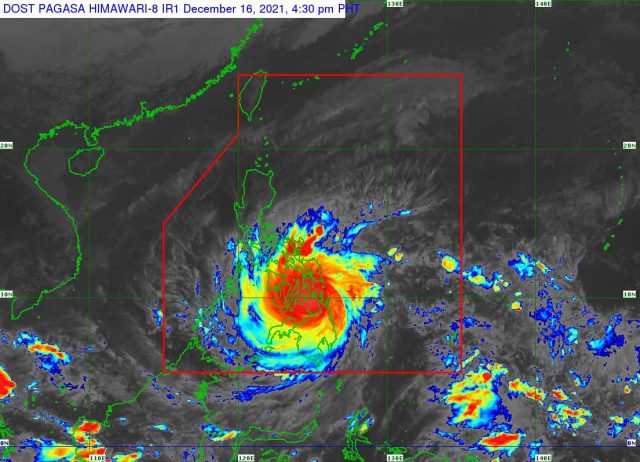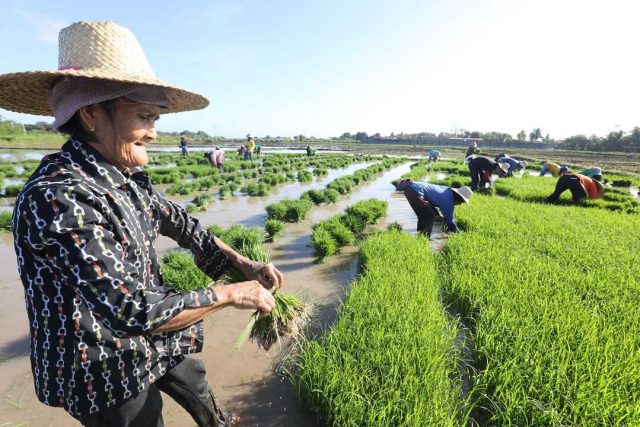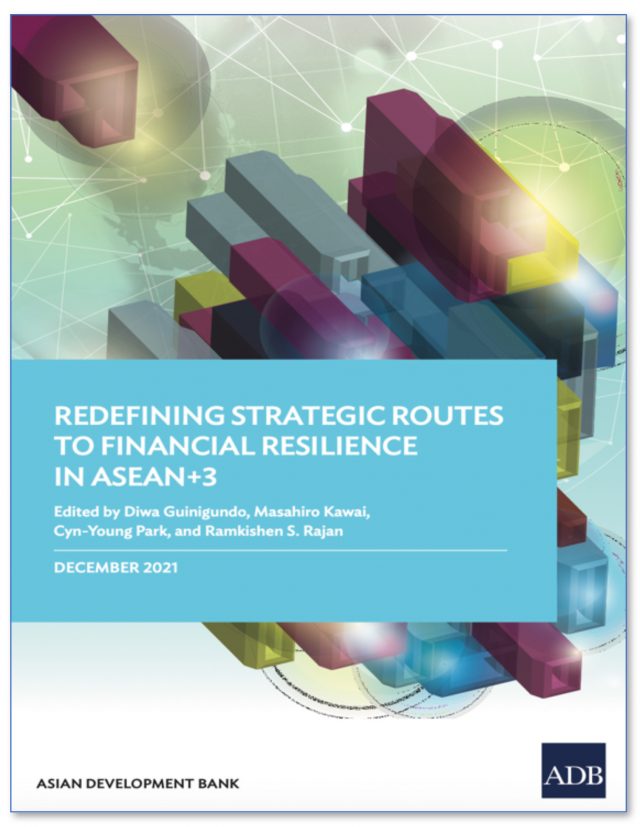An interesting Bloomberg article hit the wires three days ago entitled What Could Possibly Go Wrong? These are the Biggest Economic Risks for 2022. What caught my attention was Bloomberg’s comment that while economists have struggled to do some forecasts through the pandemic, and they’re optimistic, they “could easily get blindsided again.”
Bloomberg was correct in pointing out forecasters in general assume a base case characterized by strong recovery, manageable inflation, and normalization of monetary accommodation. These are big words but for Bloomberg, “plenty” could go wrong.
The list is relevant for global and regional application, but it may also be helpful for our national authorities’ constant watch: Omicron, sticky inflation, Fed lift-off, China’s Evergrande slump, Taiwan, a run on emerging markets, hard Brexit, a fresh euro crisis, and rising food prices in a tinder-box Middle East.
Bloomberg Economics actually developed a new tool to model global economic risks to stress-test the world economy in 2022. Too many balls in the air, and they could fall every which way. For instance, while it seems an Omicron incidence has been reported in the Philippines in the last couple of days, the extent of the harm it could inflict on the global economy could be disastrous. If less deadly, and public spending is shifted to social and economic services, global growth could improve from base forecast of 4.7% to 5.1%. Otherwise, a more devastating Omicron could send global growth down to 4.2%.

Another scenario involves the monetary stance of the US Federal Reserve. Based on the international experience with the taper tantrum of 2013 and equity sell off in 2018, Fed tightening could be troublesome for capital markets and the global economy. Assuming the elevated asset prices today in the US, both stocks and house prices, three US Fed hikes in 2022 to 2.5% could usher in another recession in 2023. Transmission goes from monetary normalization to higher Treasury yields and wider credit spreads to depressed demand.
Bloomberg projects a crash landing for emerging markets when this happens. US Fed tightening is expected to boost the US dollar and motivate capital flight from the emerging markets and even cause currency crisis in some developing economies.
Based on such metrics as current account, external debt, reserve coverage, real policy rate and governance, Bloomberg constructed the above chart to establish the vulnerability of some 21 emerging markets including the Philippines for 2022. What would squeeze many emerging markets are their high funding needs and weak governance. The original BEAST — Brazil, Egypt, Argentina, South Africa and Turkey — have remained although the order of vulnerability has changed. Among the ASEAN + 3, Malaysia is most vulnerable, followed by the Philippines, China, Thailand, South Korea, and Indonesia.
But precisely due to uncertainty, it is also possible that things could shape up as well next year.
We recall last year’s pandemic surge proved so much worse than many forecasters’ level of anticipation. This year may be quite different, too, because the recoveries for many countries clocked quicker, something that suggests next year might be more promising.
The decision therefore of the Manila-based Asian Development Bank (ADB) and the Singapore-based ASEAN + 3 Macroeconomic Research Office (AMRO) to come together and produce two publications “to assess the major economic and financial developments since the Asian Financial Crisis (AFC) and identify valuable policy lessons” could not be more timely. It is clear to both institutions that many critical issues are beyond individual economies. No one can do it alone.
We are one of the editors of both volumes.
We launched the first volume last week, entitled Trauma to Triumph — Rising from the Ashes of the Asian Financial Crisis. It covers the policy experiences of the ASEAN + 3 member countries during both the AFC and the Global Financial Crisis (GFC), recalls the policy dilemmas faced by key players during both crises, and assesses the key elements required to further strengthen regional financial cooperation.
The second volume was launched last Tuesday in a webinar. We refer to Volume 2 as Redefining Strategic Routes to Financial Resilience in ASEAN + 3. My co-editors are Masahiro Kawai, representative director and director general of Japan’s Economic Research Institute for Northeast Asia; Cyn-Young Park, director of ADB’s Regional and Integration Division under the Economic Research and Regional Cooperation Department; and Ramkishen S. Rajan, Yong Pung How Professor at the Lee Kuan Yew School of Public Policy of the National University of Singapore.
In the Preface, the editors claimed that particularly in the context of the health crisis, Volume 2 is refreshing because it provides a reframing of challenges, opportunities, and appropriate strategies for strengthening the region’s resilience to future shocks. It is essential that the region starts to formulate collective responses to manage global and regional shocks. The book calls for more realistic, rather than grand, responses because ASEAN + 3’s track record of regional financial cooperation is still limited.
With globalized finance and open capital accounts, capital movement could be pivotal. Local currency corporate bond markets should be deepened to reduce both capital market volatilities and dependence on short-term bank loans. Among themselves, regional central banks may consider establishing a repo market to reduce credit and liquidity risks in cross-border financial transactions.
Concentration risks should be managed because evidence shows their presence in the region. Slow-burn contagion is to be expected from few globally systemically important banks engaged in cross-border transactions. Deploying macroprudential policies that designate some banks as systemically important and imposing greater regulatory requirements on them could promote financial stability.
Another strategic issue is US dollar dominance in the ASEAN + 3. The US currency continues to be key to international trade, investment and financial transactions and settlements. Appropriate use of local currency is prescribed as more economic transactions expand within the region. Exchange rates should remain flexible, some regional currencies may be internationalized. Further liberalization and coordination of foreign exchange rules and regulations should also be pursued.
Since digitalization will continue to gain traction, fintech applications should be maximized to promote both financial inclusion and stability. Risks from fintech’s potential to worsen inequities across social groupings should be managed. Appropriate regulations should be in place to handle fintech’s tendency to contest the markets of banks and other financial institutions through peer-to-peer lending, crowdfunding and investment in crypto assets.
The post-pandemic period will also be characterized by the need to step up sustainable investment in infrastructure given formidable climate change. The way to go is to encourage private sector investment in infrastructure, consider pursuing public-private partnership, and reform the tax system to reflect public goods being attached to properties with improving infrastructure support.
Since the ASEAN + 3 region continues to mature and prosper, its demographics will show some aging over time. Another challenge therefore is the development of pension and insurance systems to manage the consequences of an aging population. A pension system could provide an institutional source of investment and stabilizing influence in the capital markets. With higher labor mobility within the region, it is important to consider bilateral social security agreements to achieve portability of pensions.
These issues are expected to be undertaken by individual economies in the region. The book concluded well with the call for greater regional financial cooperation. Since financial interconnectedness has increased over the years, increased spillovers may also be expected. Regional safety nets are therefore crucial. With effective macroeconomic surveillance, addressing potential liquidity shortages should be the focus of current and future regional financial cooperation. What ASEAN + 3 should resist is reforms losing steam. “Short-term complacency may soften resolve, cloud long-term vision, and serve to delay much needed reforms until another crisis.”
It is the resilience of various economies that would be tested in the next few years. ADB’s Book 2, by offering strategic narratives and assessments, rather than probabilistic forecast of what to expect after the pandemic, converts uncertainty into opportunities for ASEAN + 3 to cope. As John Kay and Mervin King (Radical Uncertainty: Decision-Making Beyond the Numbers) describe, uncertainty is the source of creativity and excitement.
Diwa C. Guinigundo is the former deputy governor for the Monetary and Economics Sector, the Bangko Sentral ng Pilipinas (BSP). He served the BSP for 41 years.
In 2001-2003, he was alternate executive director at the International Monetary Fund in Washington, DC. He is the senior pastor of the Fullness of Christ International Ministries in Mandaluyong.















 With the theme “Create Together, Our 2021”, the Exhibition is divided into five sections, including “We”, “Growing Up”, “Night and Dream”, “The Future and Far Away”, and “End: Create Together”. Through a variety of media and imaging techniques, the Exhibition links the living circumstances, feelings, and everyday moments recorded with smartphones by VISION+ Project participants over the past year. It tells the stories of creators living in the present moment, setting out from their hometowns to pursue their dreams. The Exhibition demonstrates that anyone can become a creator, capturing one’s surroundings with only a smartphone.
With the theme “Create Together, Our 2021”, the Exhibition is divided into five sections, including “We”, “Growing Up”, “Night and Dream”, “The Future and Far Away”, and “End: Create Together”. Through a variety of media and imaging techniques, the Exhibition links the living circumstances, feelings, and everyday moments recorded with smartphones by VISION+ Project participants over the past year. It tells the stories of creators living in the present moment, setting out from their hometowns to pursue their dreams. The Exhibition demonstrates that anyone can become a creator, capturing one’s surroundings with only a smartphone.




